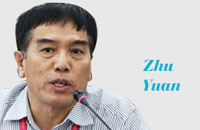Development and progress of Tibet
(China Daily) Updated: 2013-10-23 07:11Milestones of Tibet's development and progress
The founding of the People's Republic of China in 1949 opened up new prospects for the nation's development and progress on an unprecedented level. In 1951, the Central People's Government and the local Tibetan government signed the Agreement on Measures for the Peaceful Liberation of Tibet, signifying the beginning of Tibet's development and progress together with the people of the whole nation.
The year 1959 marked a turning point in Tibet's history. In that year the reactionary upper ruling strata of Tibet failed in an armed rebellion to perpetuate feudal serfdom, and the Central Government publicly announced the dismissal of the Tibetan local government. Meanwhile the people of all ethnic groups in Tibet launched a sweeping democratic reform to overthrow Tibet's feudal serfdom system under theocracy that had been in place for hundreds of years, ushering in a social reform that was considered the most extensive, profound and progressive in Tibetan history. The democratic reform liberated about a million serfs and slaves, and brought the basic human rights of equity and freedom to the Tibetan people for the first time in history. It laid the necessary economic, political and social foundation for the region's future development and progress.
In 1965, the Tibet Autonomous Region was founded, and the systems of the people's congress and regional ethnic autonomy were established. These events marked the leap forward for Tibetan society from a feudal serfdom under theocracy to socialism, with the people becoming their own masters. With the establishment of the new political system and the dissemination of ideas on democratic politics, the former serfs and slaves as well as the feudal aristocrats all became modern citizens who enjoy equal rights and exercise their political rights to equally participate in the management of state affairs and the affairs of their local ethnic groups autonomously. In this way, the Tibetan people were greatly motivated to use their enthusiasm and creativity to build a better future.
At the end of 1978, Tibet initiated the reform and opening-up drive toward modernization along with the rest of the country, ushering in a new stage of economic and social development. The Central Government set lofty goals for Tibet, striving to quicken its development and advancing it to the front row of the "four modernizations." In light of the local conditions, the government decided on guiding principles for the work in Tibet in the new era and issued favorable policies for Tibet's development. These moves vigorously contributed to the development and progress in Tibet.
In the 21st century, Tibet has entered the fast lane of development. At the Fifth Symposium on Work in Tibet held in January 2010, the Central Authorities set the goals for Tibet's development in the next stage. The objectives for 2015 are to maintain the pace of leapfrog economic development, significantly narrow the gap between the per capita net income of farmers and herdsmen in Tibet and the national average, significantly increase Tibet's ability to provide public services, further improve the ecosystem, greatly develop Tibet's infrastructure, achieve unity and harmony among all ethnic groups, maintain social stability, and make a more solid foundation for building a moderately prosperous society in all respects.
The objectives set for 2020 are to raise the per capita net income of farmers and herdsmen in Tibet so that it will be close to the national average, comprehensively raise the living standards of the people, improve its basic public services to approach the national average level, comprehensively improve infrastructure conditions, achieve significant results in creating an ecological security screen, greatly increase Tibet's capabilities for self-development, make Tibetan society more harmonious and stable, and ensure that a moderately prosperous society in all respects is established. With these goals achieved, better prospects for development will emerge in Tibet.
Development and progress in Tibet is the victory of human justice
The development and progress of Tibet is in accordance with the rules for the development of human society. From traditional agriculture and animal husbandry to a modern market economy, from the integration of political and religious powers to their separation, from autocracy to democracy, superstition to science, and isolation to openness - these are the generic laws for the development of human society. Over the past 60 years of its development, Tibet has unfailingly followed these rules and the general trend. Today, despite the existing gaps in the level of development between Tibet and other provinces, autonomous regions and municipalities in China, Tibet has narrowed the distance and basically realized synchronized growth with the rest of the country. Observed from the macro perspective of human history, Tibet has leapt from a feudal serfdom society into one with a modern civilization within a matter of only a few decades, creating an outstanding example of regional modernization.
The development and progress of Tibet is inevitably connected with the overall development and progress of China. The fate of Tibet has always been closely linked to the fate of China. Since the advent of modern times, Chinese society has been challenged by the daunting task of comprehensive transition to modernization. Tibet, as an inalienable part of China, also follows the general logic of social reform in the country. During the process of peaceful liberation of Tibet, Mao Zedong, leader of the Communist Party of China, set the course for transforming old Tibet into a "people's democratic Tibet." The profound and unprecedented changes in Tibet over the past 60 years have been consequently realized through the establishment and progress of the political, economic, social and cultural systems of the nation as a whole.
The development and progress of Tibet serves the fundamental interests of the people of all ethnic groups in Tibet. The development and progress of Tibet is the cause of the Tibetan people. In the past six decades, the development and progress of Tibet has always centered around the people's fundamental interests. In Tibet the self-improvement of individuals is consistent with the progress of society, with which more social wealth is created and thus meets the ever-growing material and cultural needs of the people. Essentially, the development and progress of Tibet reflects man's development and the realization of the people's principal position. It is a great practice for respecting and guaranteeing human rights. The development of Tibet has been a process in which people are gaining more and more freedom on the road to liberation, as well as the transformation from "deity first" to "people first." It marks the victory of the Tibetan people over the shackles of theocracy, and honors their pursuit of dignity and personal value. It is the Tibetan people who have benefited most from Tibet's development and progress.
II.
Economic Growth and Improvement of the People's Livelihood
Developing the economy is an important way to ensure the basic rights of all ethnic groups in Tibet, especially their rights to subsistence and development. The establishment of a modern economy in Tibet and its development has laid a solid material foundation for the progress of various undertakings in the region.
Economic growth constantly enhancing people's living standards
Following the peaceful liberation of Tibet, the Central Government has always given top priority to helping Tibet develop its economy, enhance its people's living standards, and change its impoverished and backward situation. It has issued a series of favorable policies, and made great achievements in promoting Tibet's economy. Currently a relatively complete socialist market system has been established in the region, and historical leapfrog development has been realized in terms of economic aggregate. Tibet's economy is growing steadily and quickly. The Gross Regional Product (GRP) of Tibet rocketed from 129 million yuan in 1951 to 70.1 billion yuan in 2012, representing an annual growth of 8.5 percent on average. The per capita GRP reached 22,900 yuan. Since 1994 Tibet has realized double-digit growth for 19 consecutive years, with an annual growth rate of 12.7 percent on average.
Substantial improvements have been made in the people's lives and their living standards. The per capita net income of farmers and herdsmen in Tibet had maintained double-digit growth for 10 consecutive years, reaching 5,719 yuan in 2012. The per capita disposable income of urban dwellers was 18,028 yuan. The building of a new socialist countryside, initiated in 2006, has greatly benefited local farmers and herdsmen, especially through its low-income housing projects. By the end of 2012, a total of 408,300 low-income houses were built, providing housing to 88.7 percent of local households of farmers and herdsmen. All farmers and herdsmen will have moved into safe modern houses by the end of 2013. In 2012, the per capita floor space of farmers and herdsmen was 28.77 sq m, and that of urban dwellers 36.14 sq m. In rural areas, infrastructure has been improved to provide the necessary facilities for the local population, including water, power, transportation, telecommunication, natural gas, radio and television, and postal services. Some 90 percent and 99.7 percent of Tibetan townships now have access to postal service and road network, respectively, and 94.2 percent of administrative villages could be reached by road. A total of 1.93 million farmers and herdsmen now have access to safe drinking water, and 150,000 rural households are using clean biogas. In addition, over 95 percent of rural households use iodized salt.
As life improves, the people are beginning to have more choices in consumption. Refrigerators, color televisions, telephones, computers, washing machines, motorcycles, mobile phones and other consumer goods have entered ordinary households. In 2012, for every 100 urban households in Tibet there were 27 cars, 16 motorcycles, 86 refrigerators, 129 color TVs, 63 computers and 88 washing machines. According to the "CCTV Economic Life Survey" jointly hosted by the National Bureau of Statistics, China Post Group, and China Central Television (CCTV), Lhasa topped the "happiness index" for five consecutive years.











